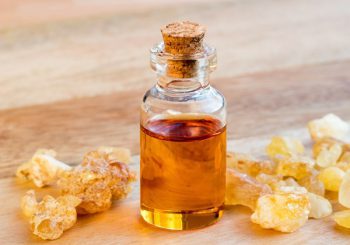By Sayer Ji
Contributing writer for Wake Up World
Frankincense oil may receive most of the fame and glory, but the humble boswellia tree from which it is derived, can also create another powerful natural medicine. Oil and extracts of boswellia have been used for thousands of years to treat numerous health conditions.
[pro_ad_display_adzone id=”110028″]
While many of us are familiar with the meditative, cleansing, and enchanting aromas of incense, the very word itself contains the powerful natural medicine from which it is derived. Frankincense, meaning “true incense” is a resin that comes from any tree species that belongs to the genus Boswellia. Spreading their branches through the Middle East, Africa, and India, this tree’s roots run deep in ancient usage and text. While all boswellia species can produce frankincense, Boswellia serrata is the supernal species that is adorned in traditional medicinal systems like Ayurveda and Unani for producing exceptional extracts.
Boswellia has a documented history of usage that dates back thousands of years, but it is quite possible this radical resin shared an evolutionary history with humans that greatly precludes our current estimates and archived paleoanthropological data. Just as fashion follows a circular cycle, with skinny jeans now the “newest rage”, so too is it time for a boswellia revival and resurgence. Currently, there are 30 clinical studies on pubmed.gov, and 28 of those studies used B. serrata (the other 2 studies did not list a specific boswellia species in their abstract). With a strong modern-day scientific backing, coupled with traditional use, boswellia is a bright beacon pushing contemporary usage of natural medicines onward and upward.
A few of its best known therapeutic roles today include treating chronic health conditions like asthma, arthritis, cancer, and gastrointestinal issues. It has also been shown to reduce edema (swelling) from brain tumors after patients underwent radiotherapy [Kirste, 2011].
“RESULTS: Compared with baseline and if measured immediately after the end of radiotherapy and BS/placebo treatment, a reduction of cerebral edema of >75% was found in 60% of patients receiving BS and in 26% of patients receiving placebo (P = .023). These findings may be based on an additional antitumor effect. There were no severe adverse events in either group.” [Kirste, 2011]
According to the American Academy of Allergy, Asthma, and Immunology in just 8 years (from 2001-2009), the prevalence of asthma jumped from 20 million people to 25 million people. That trend only seems to be increasing and if we extrapolate the data to 2017 there will be 30 million people with asthma, which is almost 10% of the population. Commonly used drugs, like inhaled corticosteroids or oral steroids may be effective, but at what cost? Serious long-term health consequences such as osteoporosis, cataracts, behavioral and mood changes, plus immunosuppression, are just to name a few [Dahl, 2006].
One of the reasons asthma is difficult to treat is because it involves an inflammatory enzyme pathway called the 5-LOX (arachidonate 5-lipoxygenase). Through a series of biochemical reactions, this enzyme produces substances called leukotrienes from the oxidation of lipid substrates, predominantly from arachidonic acid, a polyunsaturated omega-6 fatty acid [Safayhi, 2000]]. When leukotrienes are overly expressed, our immune system is excessively activated, and we enter a state of chronic inflammation, which can manifest as chronic diseases like asthma. One of the beautiful mechanisms by which boswellia exhibits its benefits is through the prevention of degradation and oxidation to these fatty acids, thus reducing the inflammatory changes in the first place.
Boswellia has also proven to be efficacious in other chronic illnesses like inflammatory bowel diseases. Collagenous colitis, which falls under the IBD umbrella, is characterized by chronic diarrhea and is typically treated with a polypharmacy approach. In a placebo-controlled, randomized, double-blind clinical study, B. serrata extract (BSE) was found to be superior in remission rates (63.6%) versus placebo (26.7%) after a six-week treatment [Madisch, 2007]. In a clinical study on chronic colitis, the remission rates were thirty percent higher in the boswellia group (14 out of 20 patients) versus the anti-inflammatory pharmaceutical drug sulfasalazine (4 out of 10 patients) [Gupta, 2001].
In a clinical study on breast cancer patients undergoing radiotherapy, a boswelia cream was found to significantly reduce the skin-damaging side effects [Togni, 2015]. Radiotherapy can cause extreme irritation, inflammation, itching, pain, and redness, which can severely alter a patient’s quality of life [Shaitelman, 2015]. Managing these disruptive side effects is typically done with steroids to reduce the immune response, but why risk the consequences when boswellia is a much safer alternative?
While boswellia extract may be a formidable force, so too are the volatile oils (essential oils) derived from the gummy resin. There are four main species of Boswellia from which high-quality frankincense oils are extracted: B. sacra, B. carteri, B. frereana, and B. serrata. While the chemical constituents may vary by species, in general, frankincense oil contains beneficial terpene compounds (limonene, alpha-pinene, beta-pinene, camphene, myrcene) [Woolley, 2012].
Human data may currently be limited on essential oil applications, but animal and cellular studies have elucidated some of the mechanisms responsible for these anti-cancer properties. Frankincense oil has demonstrated cytotoxic, apoptotic, and anti-proliferative properties against various cancer cell lines, including pancreatic cancer (which generally has an overall survival rate in humans of less than five years) [Ni, 2012].
Without applying reductionist principles to the innate wisdom of this plant, boswellia probably has countless ways by which it improves health and restore balance. Whether you prefer a boswellia extract or frankincense essential oil – caveat emptor (buyer beware) – as the purity and efficacy of products can vary greatly. Make sure to do your research and work with a company you know and trust.
To learn more about natural, evidence-based interventions for Boswellia, use the GreenMedInfo.com Research Dashboard:
References:
https://www.aafa.org/page/asthma-facts.aspx
Al-Harrasi A, Al-Saidi S. Phytochemical analysis of the essential oil from botanically certified oleogum resin of Boswellia sacra (Omani Lucan). Molecules. 2008 Sep 16;13(9):2181-2189.
Dahl R. Systemic side effects of inhaled corticosteroids in patients with asthma.Respiratory Medicine. August 2006;100(8):1307-1317.
Gupta I, et al. Effects of gum resin of Boswellia serrata in patients with chronic colitis. Planta Med. 2001 Jul;67(5):391-395.
Madisch A, et al. Boswellia serrata extract for the treatment of collagenous colitis. A double-blind, randomized, placebo-controlled, multicenter trial. International Journal of Colorectal Disease. 2007 Dec;22(12):1445-1451.
Ni X, et al. Frankincense essential oil prepared from hydrodistillation of Boswellia sacra gum resins induces human pancreatic cancer cell death in cultures and in a xenograft murine model. BMC Complement Altern Med. 2012 Dec 13;12:253.
Safayhi H, Boden SE, Schweizer S, Ammon HP. Concentration-dependent potentiating and inhibitory effects of Boswellia extracts on 5-lipoxygenase product formation stimulated in PMNL. Planta Med. 2000 Mar;66(2):110-113.
Shaitelman SF, et al. Acute and Short-term Toxic Effects of Conventionally Fractionated vs Hypofractionated Whole-Breast Irradiation: A Randomized Clinical Trial. JAMA Oncol.2015 Oct;1(7):931-941.
Togni S, Maramaldi G, Bonetta A, Giacomelli L, Di Pierro F. Clinical evaluation of safety and efficacy of Boswellia-based cream for prevention of adjuvant radiotherapy skin damage in mammary carcinoma: a randomized placebo controlled trial. Eur Rev Med Pharmacol Sci. 2015;19(8): 1338-1344.
Triantafillidis JK, Triantafyllidi A, Vagianos C, Papalois A. Favorable results from the use of herbal and plant products in inflammatory bowel disease: evidence from experimental animal studies. Ann Gastroenterol. 2016 Jul-Sep;29(3):268-281.
Woolley CL, et al. Chemical differentiation of Boswellia sacra and Boswellia carterii essential oils by gas chromatography and chiral gas chromatography-mass spectrometry. J Chromatogr A.2012 Oct 26;1261:158-163.
Recommended Articles by Sayer Ji:
- The Power and Mystery of Melanin Explained
- Cell Phone Induced Bodily Harm: How the Bees Can Help
- The Spice That Prevents Fluoride Destroying Your Brain
- How to Clean Your Arteries with One Simple Fruit
- 7 Healing Uses for Lavender Essential Oil
- From Table to Tomb: Cumin’s Health Benefits Rediscovered
- Why You Should Ditch Sugar in Favour of Honey
- The Love Affair Between Saffron and Humanity: As Ancient as Time Itself
- Why Walnut Resembles the Brain It Nourishes
- Magnesium Puts Psychiatric Drugs to Shame for Depression
About the author:
Sayer Ji is the founder of Greenmedinfo.com, a reviewer at the International Journal of Human Nutrition and Functional Medicine, Co-founder and CEO of Systome Biomed, Vice Chairman of the Board of the National Health Federation, and Steering Committee Member of the Global Non-GMO Foundation.
© 2020 GreenMedInfo LLC. This work is reproduced and distributed with the permission of GreenMedInfo LLC. Want to learn more from GreenMedInfo? Sign up for their newsletter here.
[pro_ad_display_adzone id=”110027″]








